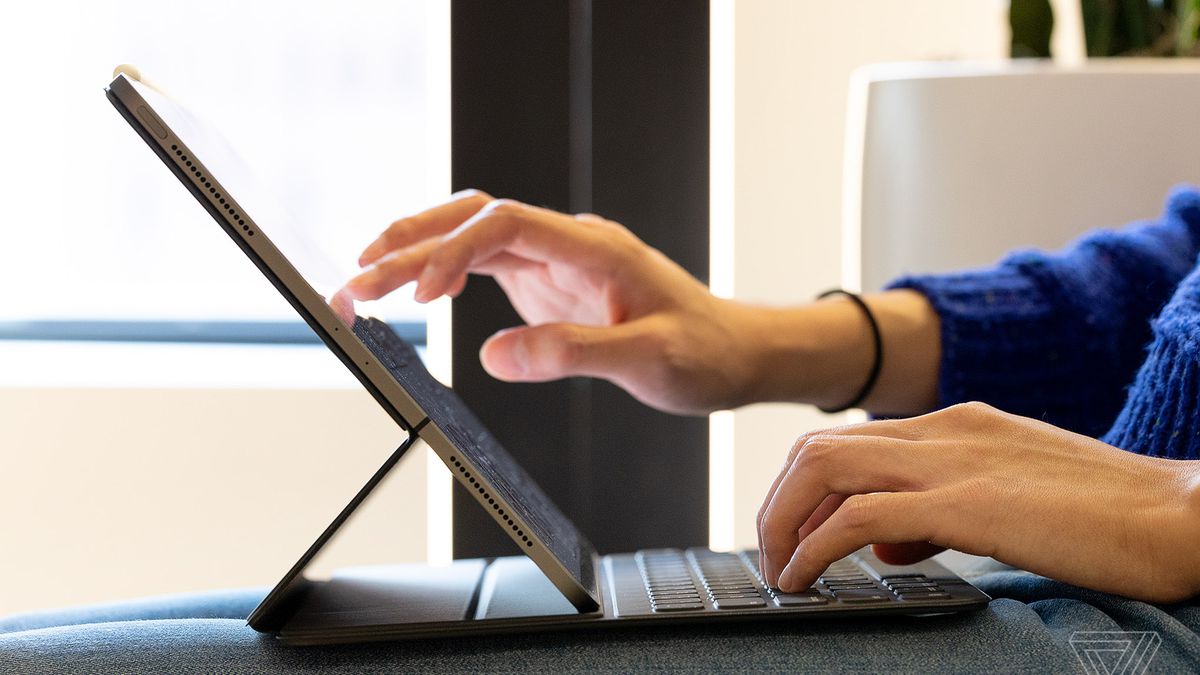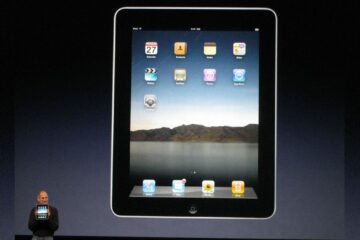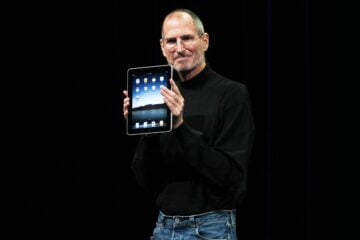/cdn.vox-cdn.com/uploads/chorus_image/image/63965954/akrales_181101_3064_0037.0.jpg)
There’s a lot to love about Apple’s new iPad Pro lineup. They’re super fast and incredibly thin with an endless battery life and reliable cellular connectivity. If you can deal with iOS to get your work done — which is admittedly a pretty big “if” for a lot of people — it’s hard for laptops to compete on those terms. This week’s announcement of the forthcoming iPadOS software update is only going to narrow the gap.
But if you do want to use your iPad Pro for work, you’re going to want a keyboard. And while various third-party options are just now starting to trickle out for the latest iPad Pro models, it might not be clear to you which one is the best fit, especially as Apple’s own keyboard has a divisive new design.
I started writing this article thinking I’d be able to identify the best keyboard for the iPad Pro. I just can’t do that here: there is no single best iPad Pro keyboard for everyone.
There are, however, certain iPad Pro keyboards that are best at specific things. I tested the 12.9-inch versions of these keyboards because that’s the iPad Pro I use, but everything should also apply to the 11-inch versions. If you know what you’re looking for or have a particular workflow in mind, you can probably find the right fit.
:no_upscale()/cdn.vox-cdn.com/uploads/chorus_asset/file/16325107/DSC00715.jpg)
Contents
THE MOST PORTABLE OPTION
Apple’s Smart Keyboard Folio is the best option if you value portability and don’t plan to use your iPad Pro as a primary writing machine. It’s a slim case that attaches magnetically to the back of the iPad and flips around like a laptop, with two angles that you can snap the screen into. The fabric-covered keys have very shallow travel but actually feel good to type on. I prefer them to Apple’s current MacBook keyboards, and they’re certainly less likely to break.
The best thing about the Smart Keyboard Folio is its convenience. It’s the only iPad Pro keyboard to make use of the Smart Connector on the back of the tablet, which handles pairing and power automatically. You never have to charge the keyboard or dive into Bluetooth settings. It’s also really easy to remove whenever you just want to use the iPad as a tablet by itself, and it’s by far the thinnest and lightest keyboard option available. Out of all the keyboards in this review, it’s the only one that really makes sense as a basic protective case at times when you’re unsure whether you’ll be doing any typing.
The Smart Keyboard Folio isn’t perfect, though. Overall, I actually think it’s a step backward from the Smart Keyboard Cover Apple sold for earlier iPad Pro models (and now, the new iPad Air). The primary advantages of the new design are that it has an extra viewing angle and protects the back of the iPad as well as the screen. But that new viewing angle is far too steep to be useful. I’ve never felt much need to protect the back of an iPad, and the Folio turns out to be much less versatile than the Cover. I really miss the ability to roll the Cover up into a basic kickstand for watching video as well as the easel-style mode that elevated the iPad slightly on a desk.
For those use cases, you’ll want Apple’s keyboard-less Smart Folio, which sells for an extortionate $79 or $99, depending on the size of your iPad Pro. (Or you could do what I did and get the virtually identical $20-ish ESR Yippee Magnetic Smart Case, which I bought on Wirecutter’s recommendation.) The Smart Keyboard Folio itself, meanwhile, is a pricey $179 for the 11-inch version and $199 for the 12.9-inch size. It’s the most expensive iPad Pro keyboard on the market.
As is often the case with Apple, you’re paying more for a smoother experience that doesn’t necessarily encompass everything you might want it to. But if you’re fine with the Smart Keyboard Folio’s limitations, it’s a good option.
:no_upscale()/cdn.vox-cdn.com/uploads/chorus_asset/file/16325108/DSC00712.jpg)
THE BEST LAPTOP-LIKE EXPERIENCE
Sometimes you just want something familiar, and that’s where Brydge comes in. Brydge has been making laptop-style iPad keyboards for almost as long as the iPad has been around, and the new Brydge Pro is its best effort yet. It’s a MacBook-esque slab that mirrors the sleek proportions of the new iPad Pro, turning the tablet into a laptop with a 4:3 aspect ratio touchscreen.
If you ever want to type on your lap with an iPad Pro, the Brydge Pro is by far the best option. It feels exactly like a laptop, thanks to the responsive keys and well-designed hinges that clip onto the iPad’s corners and — crucially — easily let you remove it for tablet use. It’s that flexibility that really makes the Brydge Pro sing.
Unlike Apple’s Smart Keyboard Folio, the Brydge Pro has a full-sized backlit keyboard that includes media controls and keys for brightness. The hinge can also be adjusted to any angle, including a tablet-first media mode. Thanks to the lighter design of the latest Pro generation, the iPad won’t tip over backwards when tilted to wider viewing angles, which had been an issue with prior Brydge keyboards.
The Brydge Pro charges over USB-C and should last weeks to months based on your backlighting settings. (You can even charge it directly from the iPad Pro’s USB-C port.) The backlighting does not quite look as attractive as it does on a MacBook Pro or a nice mechanical keyboard. The gap under the U key on my review unit is bigger than the other letters, for some reason, which looks like a quality assurance miss. But it does the job, and Brydge is undercutting Apple’s much less functional keyboard by $30 on each size.
If I was sticking my iPad into my bag for a weekend trip where I didn’t expect to type much, I’d use Apple’s Smart Keyboard Folio. But if I was putting it in my bag for a trip to a café where I planned to jam on some drafts — the exact scenario in which I am writing these very words, as it happens — I would pick the Brydge. It’s a really well-designed product that helps you get the best out of both laptop and tablet worlds.
The laptop that the Brydge Pro turns the iPad into is unlike any other laptop. It has a tall aspect ratio, tiny bezels, built-in LTE, and tons of great touch apps that run super fast. It also has no trackpad, weighs more than a 13-inch MacBook Pro, and runs an occasionally maddening OS. But I think a lot of people will really dig it.
:no_upscale()/cdn.vox-cdn.com/uploads/chorus_asset/file/16325109/DSC00719.jpg)
THE CHEAPEST OPTION
Logitech reliably pumps out keyboard cases for each new iPad Pro model, and the latest iteration arrived recently. The Slim Folio Pro’s design is conceptually similar to Apple’s Smart Keyboard Folio, but Logitech’s trades elegance for functionality.
The keyboard is backlit and has a row of shortcut keys, the case is much more protective, and there’s a little flap to let you keep an Apple Pencil magnetically attached to the iPad without it detaching in your bag. You can also use it in an easel-style mode, which might make it a better option for artists and other heavy Pencil users. Like the Brydge Pro, it connects over Bluetooth and charges over USB-C.
The trade-off is that despite the name, the Slim Folio Pro is bulky. It’s awkward to get the iPad in and out of the case, and I really don’t think you’d want to use the iPad in this case in any other situation than desk work. It also has just one viewing angle and my least favorite key feel out of any option I tested, though other colleagues didn’t mind that so much. I just thought it felt kind of chintzy and cheap.
In fairness to Logitech, the Slim Folio Pro actually is relatively cheap at $129.99 for the 12.9-inch version. That’s a full $70 less than Apple’s own option. Pricing aside, I’d still recommend it to artists or occasional typists who want a fully protective case that they don’t plan on removing the iPad from too often.
:no_upscale()/cdn.vox-cdn.com/uploads/chorus_asset/file/16325110/DSC00716.jpg)
THE BEST DEDICATED KEYBOARD
If you want an iPad-first keyboard that feels great to type on and absolutely nothing else matters, you might want to look at the Zagg Slim Book Go. It reminds me a lot of the awesome yet impractical Razer keyboard for the original iPad Pro because the design is more or less the same. There’s a bulky iPad case with a fold-down kickstand, and it attaches to a Surface Pro-style keyboard that sits in front of the screen. It connects over Bluetooth, so you can use it wirelessly if you like.
The keys aren’t quite as great as the Razer’s, which used unique low-profile mechanical switches, but I like them better than Apple, Brydge, or Logitech’s. After you take a second to get used to the circular keycaps, typing feels snappy and responsive on the Zagg, though obviously not on the level of a dedicated mechanical keyboard. The variable kickstand and detachable keyboard mean the setup is adjustable to a lot of different situations, which is appreciated.
Unfortunately, Zagg’s use of the word “Slim” is even less appropriate than Logitech’s. This case is huge, with an even larger footprint, thanks to its Apple Pencil slot below the screen, and it’s just as frustrating to use if you want to take the iPad out with any degree of frequency. The kickstand design also means that it takes up a ton of desk space behind the screen. Good luck using this on a plane, and forget about using it on your lap.
I’m just not really sure who the Slim Book
Go is for. If you want to keep your iPad on your desk and do a lot of typing while making sure you can protect it whenever you have to evacuate the building due to an unexpected earthquake, this is probably your best option. I don’t think it’d work as well for most others.
:no_upscale()/cdn.vox-cdn.com/uploads/chorus_asset/file/16325111/DSC00714.jpg)
THE BEST AT-HOME EXPERIENCE
With one big caveat, the smoothest keyboard experience on the iPad comes from Apple’s own Magic Keyboard, which is designed for desktop Mac use. It’s a great keyboard in its own right, and there’s a whole genre of accessories that convert it into a case that can prop up an iPad then fold down to protect the keyboard in travel. Studio Neat’s Canopy is a popular version of this design, though it wasn’t shipping while I was preparing this article, and I ended up going with a really cheap — like, $15 cheap — option from a company called Fintie after reading a recommendation onMacStories.
The Fintie Carrying Case for Apple Magic Keyboard, for that is its full name, is a simple leather-ish case for the Magic Keyboard that opens up into a stand that just so happens to be the perfect fit for the 12.9-inch iPad Pro. After the keyboard is paired, all you do is drop the iPad onto the case, and you’re set. It’s effortless to remove the iPad, and you can just flip the power switch on the keyboard if you want to turn it off. I’ve found this to be a fantastic setup for home use. I just leave the case and keyboard on a desk, use the iPad as a tablet around the house, then drop it into the case when I want to use it for work.
That big caveat I mentioned earlier, however, is that this kind of setup doesn’t work so well if you ever want to work on your iPad outside of the house. That’s because you’ll probably want to find some other protective solution — in my case, that knock-off Smart Folio — and attach it whenever you go out. Then, you’ll have to detach it when you start typing. You’ll have to find space for another large rectangular object in your bag, and you’ll have to find somewhere to put the protective case when you reach the desk at your destination. It’s just kind of a hassle when you’re jostling for space at a cafe.
If all you want to do is use your iPad Pro as a tablet around the house and as a laptop on your desk, though, these Magic Keyboard stands are great. You’ll get the best keyboard out of any option listed here and the most frictionless experience when it’s time to use the iPad by itself.
[“source=theverge”]



